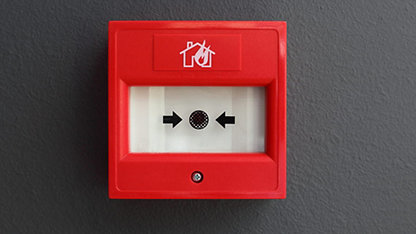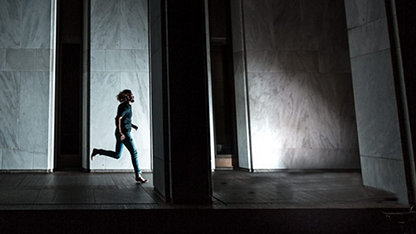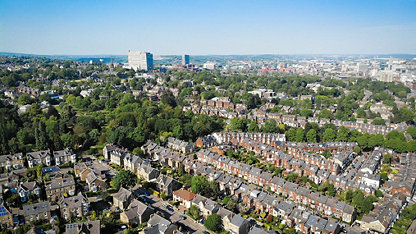Frequently asked questions - EWS
The external wall system (EWS) is made up of the outside wall of a residential building, including cladding, insulation, fire break systems, etc.
The EWS1 form is designed to be used for residential properties such as blocks of flats (including those owned by housing associations and social housing providers as well as privately owned), student accommodation, dormitories, assisted living, care homes and Houses in Multiple Occupation (HMOs).
The EWS1 form is not specifically designed for use of short-term accommodation such as hotels. EWS1 does, however, apply to an entire building or block so where required, may also be relevant to mixed use.
The EWS process, and resulting form, is a set way for a building owner to confirm that an external wall system on residential buildings has been assessed for safety by a suitable expert, in line with government guidance.
The EWS1 process delivers assurance for lenders, valuers, residents, buyers and sellers. The process was developed through extensive consultation with a wide range of stakeholders including fire engineers, lenders, insurers, valuers, and other cross industry representatives.
The process itself involves a "qualified professional" (see download on this page) conducting a fire-risk appraisal on the external wall system, before signing an EWS1 form, which is valid for the entire building for five years.
The form was originally designed following Government advice regarding external wall systems for buildings above 18m and was created to ensure residential buildings over 18m tall could be assessed for safety to allow lenders to offer mortgages. Changes in Government advice in January 2020, brought all residential buildings of any height potentially within scope.
However not every building will require an EWS1 form. RICS has published proportionate guidance for valuers on 8 March 2021 and is working with UK Government and other stakeholders to ensure the guidance is implemented post the effective date of 5 April 2021. This guidance includes criteria that will be used to help decide whether a particular building should need an EWS1 form. Valuers will always need to follow instructions given by their lender clients.
The criteria considers the height of the building, the type of cladding and (in some circumstances) how much of it there is on the building. There are also criteria relating to balconies and combustible material. You should always have a rationale to justify the request for the EWS1 form.
On 16 March 2022, the EWS1 form was updated to reflect the Government Building Safety announcement, notably the immediate withdrawal of the Consolidated Advice Note (CAN) and the publication of BSI PAS9980:2022 – Assessing the external wall fire risk in multi-occupied residential buildings. The form is now electronic and includes version control, so there is a clear audit trail of the rating provided if the same assessor/firm undertakes an EWS on the building.
If there are minor administrative errors in the original form, the original form date should be inserted in the ‘Date of form:’ box at the top of page 3 and the date of any changes put in the table beneath with the changes made.
All previous EWS1 Form versions (original version December 2019 and v2 8th March 2021) completed to date are valid for 5 years; unless the building owner wishes to commission a new EWS assessment in accordance with PAS 9980, which may or may not result in a different rating in an EWS1 Form. Individual lender policy should be consulted to confirm that forms completed prior to the publication of PAS9980 are still accepted.
No, they remain valid until such time as a new EWS1 form or updated fire risk assessment including an EWS appraisal is completed.
RICS is aware of blocks of flats where more than one EWS1 Form has been produced. RICS is also aware that Government have advised, under ‘Ministerial Statement (HCWS228) on building safety in medium and lower-rise blocks of flats’ announced in Parliament on 21st July 2021’ that there are recommendations to review all existing EWS1 forms. The building owner is responsible for clarifying which EWS1 Form is current, whether the form is still required, or why more than one form was produced which will normally explain the situation. If needed, the building owner should refer to the professionals involved and where appropriate through the firm’s formal complaint handling procedures.
RICS regulated firms are required to have a formal complaints handling procedure in place and are subject to regulatory oversight. Where there are concerns over a RICS member or firm’s competence or conduct, these can be raised through our formal regulatory process.
RICS can not become involved in professionals registered with other bodies.
No. Each EWS1 form is valid for an entire block / building. Each block will require its own EWS1 form. It is valid for five years.
In Scotland, separate EWS1s can be required on a flat-by-flat basis due to its different legal system. We are working with the Scottish Government to find a solution to this issue through the Single Building Assessment (SBA).
Due to differences in legislation and home ownership in Scotland, direct intervention in issues of combustible cladding assessment has been necessary.
The Scottish Government Single Building Assessment (SBA) is at pilot stage and includes 105 entries, and will ramp up during 2024 once the specification for the SBA is settled. Further updates on the process in Scotland will be provided in due course by the Scottish Government. RICS anticipates that there will be considerably more buildings in scope once the data is available.
The SBA Pilot includes 105 buildings (Sep 2023), which is expected to rise. The Scottish Government are completing a survey of relevant 11m+ medium and high-rise buildings, and have introduced a Cladding Remediation Bill to help safeguard homeowners and residents by creating a new power for the Government to undertake urgent measures to remediate unsafe cladding that presents a risk to life. The Bill is expected to gain Royal Assent this year and come into force in September 2024. (See below for further details).
In addition, they seek the devolution of powers to introduce a levy equivalent to the UK Government’s Building Safety Levy for England, to ensure the residential development sector makes a fair contribution to the Scottish Government’s costs of the Scottish Cladding Remediation Scheme. To date, the majority of developers have signed up to pledge self-remediation of buildings they were responsible for. Developer Remediation Contracts are in progress with each individual developer. So called ‘comfort letters’ regarding individual blocks are also in progress.
See also the Scottish Advice Note (SAN) v2, published on 16th December 2022, which provides advice for those responsible for fire safety in residential buildings including building owners/managers/residents groups responsible for determining the fire risk posed by external wall systems on existing multi-storey residential buildings. This is primary government guidance and currently takes precedence over PAS9980 and other guidance.
Successful RICS EWS Assessment course completers working in Scotland will be required to register as a supplier with Public Contracts Scotland in order to be appointed directly by the Scottish Government.
The Building (Scotland) Amendment Regulations 2022 was amended in June 2022 effectively banning the use of combustible materials in an external wall build up:
Building standards technical handbooks 2022: summary of changes for 1 June 2022 - gov.scot (www.gov.scot)
Regulation 8 is amended to ban the use of combustible materials in external wall cladding systems on dwellings and on other defined ‘relevant buildings’ with a storey at a height of 11 metres or more.
A cladding remediation Bill has been introduced (Nov 23) for an Act of the Scottish Parliament to confer on the Scottish Ministers powers to identify external wall cladding systems on residential buildings that create or exacerbate risks to human life and to address those risks; to establish a register to record that a building's cladding has been assessed and that remediation works have been completed; to enable one or more schemes to be established to require persons in the building industry to contribute towards assessing and remediating dangerous cladding; and for connected purposes.
RICS experts have given evidence at Holyrood to the committee scrutinising the Bill based on experience of cladding issues including within England.
Bill as introduced: https://www.parliament.scot/-/media/files/legislation/bills/s6-bills/housing-cladding-remediation-scotland-bill/introduced/bill-as-introduced.pdf
Overview page: https://www.parliament.scot/bills-and-laws/bills/housing-cladding-remediation-scotland-bill
The Welsh Government are committed to improving building safety to ensure another tragedy like Grenfell is avoided. Whilst there are differences in approach to rectification of cladding defects and building safety from England, the overall impact should be safer buildings. RICS has been and continues to work closely with the Welsh Govt on these issues.
The Fire Safety Act 2021 was also implemented in Wales, by The Fire Safety Act 2021 (Commencement) (Wales) Regulations 2021, which came into effect on 1st October 2021.
The Building Safety Act 2022 has not yet been implemented in Wales, and no new national regulator such as the BSR has been set up. More information on changes in Wales will be posted here for future reference.
The EWS1 process applies equally to Wales as it does to England. Read the Ministerial / RICS statement published 21st March 2023 here. The extended guidance applicable to Wales is expected to be published autumn 2023, further updates will be made here.
The Welsh Government has published (28 July 2023) new fire safety guidance, as seen below.
This guidance is for anyone responsible for fire safety in a small building. It will help them carry out their legal duties:
- Fire Risk Assessment Checklist
- Guidelines to make your guest accommodation fire-safe
- Guidelines to protect your small non-domestic property from fire
- Guidelines to protect your small block of flats from fire
You can read the guidelines here.
What is the Welsh Building Safety Fund?
The Welsh Building Safety Fund allows Responsible Persons the opportunity to access support to carry out building safety related surveys.
Further information can be found here.
The Northern Ireland Department for Communities are committed to improving building safety to ensure another tragedy like Grenfell is avoided. Whilst there are differences in approach to rectification of cladding defects and building safety from England, the overall impact should be safer buildings. RICS has been and continues to work closely with the DfC and the Department of Finance on these issues.
The DfC has formed an agreement with the Department for Levelling Up, Housing and Communities (DLUHC) that Northern Ireland cladding remediation funding applications can be processed and delivered through its Cladding Safety Scheme (CSS). In Northern Ireland, the funding will be administered by Homes England as part of the English scheme.
As in England, the Northern Ireland £33m funding applies to remediation of unsafe cladding on blocks 11m+ where a responsible developer cannot be identified, traced or held responsible.
The CSS opened for new funding applications from Northern Ireland applicants on 7 August 2023.
The EWS1 Form and process apply equally in N.Ireland.
The EWS1 (external wall system) process, is agreed by representatives for developers, managing agents, fire engineers, lawyers, lenders, insurers, and valuers, and has been adopted across the industry.
Its purpose is to ensure that a valuation can be provided for a mortgage or re-mortgage on a property which features an external wall cladding system of uncertain make up, something that has both safety implications and which may affect value if remediation is required due to the fire risk associated.
The process results in a signed EWS1 form per building, with two options/ outcomes:
Option A - External wall materials are unlikely to support combustion
Option B - Combustible materials are present in an external wall with sub options of either; B1 - fire risk is sufficiently low that no remedial works are required, or B2 fire risk is high enough that remedial works are required.
The EWS1 form itself certifies that the external wall cladding system has been assessed by someone who is suitably qualified to do so. A list of suggested bodies for a building owner or their agents to contact to source fire experts can be found here.
While the form applies to residential buildings, changes in Government advice introduced in January 2020, meant that all residential buildings of any height with a wall system would need to be risk assessed. RICS has produced proportionate guidance to help valuers decide when an EWS1 form should be required, particularly for sub-18m blocks which is still applicable now the Government advice has been withdrawn.
It is also important to note what the form will not do. It is not a life safety certificate. It is only for the use of a valuer and lender in determining if remediation costs affect value. Where a building is found to need remedial works this will need to be carried out by the building owner, to ensure safety of the building, before a mortgage can proceed unless the lender agrees otherwise.
RICS welcomed the proportionate approach outlined in Secretary of State announcements in February 2021 and January 2022,on the additional funding for the removal of dangerous cladding in all qualifying residential properties over 11m. Government funding is something RICS have long called for.
The seller can request that their building owner or managing agent commission an EWS assessment, and / or enquire as to the make-up of the wall system. The building owner or managing agent is responsible for confirming what materials are on their building, and in respect to the EWS1 form, the person responsible for the building needs to confirm what the wall system is made up of and whether an assessment is required.
The Fire Safety Act 2021 makes it clear that a Fire Risk Assessment (FRA) of a residential building must now have consideration (amongst others) to the external wall system. If the FRA is out of date or many years old, it will likely not have considered the EWS make-up. It is the Responsible Persons legal duty to have an up to date FRA.
The EWS1 process/ form is for building owners to undertake. Both sellers and buyers should be in contact with the building owner or their agent to ensure this takes place as quickly as possible.
If the building owner does not acknowledge their responsibility and refuses to undertake the necessary assessment, the local council can provide further advice, and it should be referred to the Fire and Rescue Service. No one should be living in a building which is unsafe, and the building owners are the only ones who can progress this.
Building owners have a clear responsibility reinforced by government advice to arrange for the wall system to be checked where necessary and therefore have a route to remediation where needed. Leaseholders should continue to engage with the building owner or their managing agent to ensure this happens.
RICS is working with Government and other stakeholders as part of the Fire Safety Act implementation, which gained Royal Assent at the end of April 2021.
The EWS1 form must be completed by a fully qualified competent member of a relevant professional body within the construction industry with sufficient expertise to identify and assess the relevant materials within the external wall cladding and attachments, including whether fire resisting cavity barriers and fire stopping have been installed correctly in accordance with PAS 9980. See also RICS guidance Cladding for surveyors: Supplementary information published March 2021.
In addition, in January 2021, RICS launched a new training programme for MRICS/FRICS chartered building surveyors and chartered building control surveyors (see below), to enable them to undertake external wall system assessments for low to medium rise residential buildings below 18m. Buildings over 18m or those which are high risk and require specialist testing will still require a qualified (CEng / IEng) fire safety engineer. The newly qualified professionals will help increase the number of professionals qualified to carry out such assessments and support the current market demand, subject to access to professional indemnity insurance.
In June 2022, it was announced that a new Government backed professional indemnity insurance scheme for EWS1 assessors would be delivered by MGAM, an Acrisure partner, and SCOR in partnership with the Department for Levelling Up, Housing and Communities and would commence in September 2022. This scheme was closed by DLUHC at the end of October 2023.
We have been made aware that unqualified people may be signing off EWS1 forms. RICS condemns anyone using the current situation for their own personal gain, with potentially dangerous consequences for residents, and would urge that any further information related to this is made available to trading standards and RICS if appropriate.
UK banks and building societies have robust measures in place to protect people against fraud, which would pick up any EWS1 form that is suspicious, but we encourage everyone to check the signatory on a form with the professional concerned and with the professional’s institution. If an RICS member is completing your EWS1 form, you can check their membership with us on our website.
There is a list of suggested bodies to contact to source fire experts. This list is not exhaustive, nor does it constitute an endorsement or approval from RICS, UKF or BSA, and other bodies with relevant expertise may be able to assist. Anybody instructing an EWS1 form must be satisfied that the signatory meets the requirements as described above.
This is up to the expert undertaking the assessment, it is recommended this is in accordance with PAS 9980:2022 Assessing the external wall fire risk in multi-occupied residential buildings. It must include evidence of the fire performance of materials used in the cladding.
While paperwork submitted by the building's original developer and/or owner can form part of the evidence, it cannot be solely relied upon. Photo evidence of the cladding system will be required and a physical inspection where this is not available or inconclusive.
In many cases - even where all attempts to establish the cladding system have been taken – the make-up and composition of the external wall system may still be unclear. Intrusive tests may be required, alongside a more detailed review by a professional of a higher level of expertise.
Such tests may involve a hole being drilled into the wall or a section of cladding removed in many locations to identify the external wall system materials and their composition. It is crucially important to identify the whole make-up of the external wall system and how it has been installed.
An EWS1 assessment is required every five years for each building or block. This means multiple sellers located in one block can use the same assessment to assist with the sale of their property.
Five years is intended to capture any renovation or adaptation work done to the building, as well as maintenance over that period.
However, a new EWS1 assessment may be required within the five-year period if substantial works have been completed to a property, affecting the original conclusions.
Now the Fire Safety Act 2021 has been passed, the building owners of all multi-storey, multi-occupied buildings in England will be required to undertake updated fire risk appraisals and assessments of their buildings, which includes, where appropriate, an assessment of the external wall system.
If an external wall system requires remedial work then we would expect the valuer to take this into consideration in their valuation. Other measures in mitigation such as installation of a fire alarm may mean the cladding does not need remediation. A valuation will only be possible if there is clarity on cost of the work and a timeline for works to be completed. Lenders are unlikely to lend until remedial work has been completed, but some may choose to do so with retentions and the like based on their own risk appetite.
The EWS assessment is for the building owner to oversee, but the resulting report and EWS1 form should be available on request to all occupants in that block in the interests of transparency.
RICS welcomed the Secretary of State announcements in February 2021 and January 2022, on the additional funding for the removal of dangerous cladding in all qualifying residential properties over 11m. Upfront government funding is something RICS have long called for. However, leaseholders may still be required to contribute to the Government funded remediation, subject to caps, and clarity on the costs that will be incurred per flat will be required for a valuation to proceed.
There has been no announcement of any Government funding for remediation for blocks below 11m.
The EWS1 form assessment is to be carried out for valuation purposes only. It’s about the safety of different types of external wall systems used in residential buildings located across the United Kingdom and will determine whether or not remedial works are required, thereby affecting value. It is not designed to assess other fire safety features or risks and should never be used to determine the overall risk of fire to a building. It is not a life safety certificate.
The person responsible for the building (Responsible Person under the Regulatory Reform (Fire Safety) Order 2005) should have a fire risk assessment (FRA) for the building as this is an independent legal requirement that is already in place and has not in the past commonly incorporated assessment of external wall materials. Note this has changed with the Fire Safety Act coming into force in England and updated FRAs will need to cover the external cladding where this exists.
No. ‘Nil valuations’ is a technical term used in the process of valuing a property for mortgage lending purposes, where a valuer is unable to provide a value at that moment in time i.e. when the valuers’ inspection takes place due to insufficient information being available. Often a ‘nil valuation’ signals that the lender or valuer requires further information before a valuation can be made, rather than a property being unsellable.
The leaseholder must consult with the building owner and/or managing agent to determine a way forward, which may involve an EWS assessment being required (and possibly an EWS1 Form completion) so that the valuer and lender can be informed whether remedial works are required or not, and if they are how these will be funded.
No. A new building should be compliant with current building regulations and guidance at the time of construction. Carrying out an EWS assessment known as an FRAEW in accordance with PAS 9980 is not appropriate. The building owner should be able to supply all relevant certification re building regulations compliance etc which should satisfy any lender requirements.
Changes in Government advice in January 2020 (the Consolidated Advice Note or CAN), at the time brought all residential buildings into scope, which meant many residential buildings below 18m may have required an EWS1 form. For buildings of five or six storeys, there could be a significant amount of cladding on the building, or a check could be due to the types of panels on the building. For buildings of four storeys or fewer, there may be present the most dangerous types of cladding present. The RICS guidance note for Valuers published 08 March 2021 provides information on proportionate criteria where an EWS1 should be required. However, lenders may have differing criteria although RICS has been working hard with lenders to ensure the guidance is adopted.
A valuer should always have a rationale to justify the request for the EWS1 form, which may be the lenders requirements.
EWS1 form assessments are not the cause of people finding themselves unable to move. In fact, they are helping to keep the home buying and selling market from stalling in exceptional circumstances, with over 6000 completed to date.
Following Grenfell it became apparent, despite having building regulation certification, buildings may have fire safety concerns. This halted the market in some areas largely over concerns about the extent of future costs of remedial works, and where they would fall. The EWS1 form review process was introduced jointly by RICS and UK Finance and BSA, to inform buyers, owners, lenders and valuers on the extent of works needed on the highest risk properties.
However, since the introduction of the EWS1 form in Dec 2019, Government advice to check a wall system was extended beyond the original scope, increasing the number of buildings needing checks.
Some of the issues arising from this change have now been addressed and eased following the publication of RICS guidance, which clarifies where EWS1 forms are needed in a proportionate manner. Given the relatively small pool of fire engineers that are competent and have sufficient insurance to allow them to undertake these reviews, delays are unfortunately occurring in some cases (see below for more on the RICS training course to address this challenge). However, the latest guidance should result in fewer EWS1 form requests which will enable the fire engineers to focus on the high-risk buildings. Ultimately, the EWS1 form process provides much-needed clarity for purchasers, and lenders, around where works are required, avoids financial loss and helps to keep people safe.
DLUHC have published data on the requirement for EWS1 Forms by the major lenders here. This indicates, as expected, that the gradual use of EWS1 Forms would reduce over time.
Headlines
- Data received by DLUHC, provided by 6 mortgage lenders in the UK, shows that the majority of mortgage valuations for flats do not require an EWS1 form or equivalent. Between October 2023 and December 2023 there were 33,000 mortgage valuations for flats in the UK by these lenders, with EWS1 forms or equivalent being required in less than one in ten cases.
- During the October-December 2023 quarter, an EWS1 form or equivalent was required by lenders for 9% of mortgage valuations for flats in the UK, a decrease on 10% in April to June 2023.
- Data received by DLUHC from 5 mortgage lenders who provided height breakdown information, covering 28,000 mortgage valuations between October 2023 and December 2023, shows that height is a key factor in whether an EWS1 form or equivalent is required:
- 46% of mortgage valuations for flats in buildings seven storeys and above required an EWS1 form or equivalent during the October 2023 - December 2023 quarter, a decrease from 62% in the April 2023 - June 2023 quarter.
- Flats in mid-rise buildings (5-6 storeys), required an EWS1 form or equivalent in 25% of valuations during the October 2023-December 2023 quarter, a decrease from 32% in the April 2023- June 2023 quarter.
- Flats in the lowest-rise buildings (1-4 storeys) required an EWS1 form or equivalent in 2% of mortgage valuations during the October 2023-December 2023 quarter, the same as in the April 2023- June 2023 quarter.
Not at the moment. The code of practice for external walls is for building surveyors and fire engineers who will need to carry out mandatory EWS fire risk assessments on buildings as part of the Fire Safety Act 2021 amendments. Under PAS 9980:2022 – the document which will provide a consistent methodology for carrying out an external wall appraisal - there will still need to be a summary report for valuers and lenders to ensure that the property is safe to lend on and does not have remediation costs affecting value. In time, updated FRAs with EWS appraisals (where appropriate) will be carried out for all blocks, and RICS envisages the need for an EWS1 Form will then drop away.
PAS 9980 introduced the term FRAEWs (Fire Risk Appraisal of External Walls), and all competent qualified trained professionals undertaking this work should now be using PAS 9980. The CWCT have also published guidance to assist professional assessors, see this link.
The IFE and FIA have published 5th March 2024, new guidance to support use of risk acceptability and proportionality under PAS 9980 ‘Proportionality and risk when carrying out FRAEWs to PAS 9980’.
Cavity barriers are often an essential part of an external wall construction, so they need to be considered in any assessment of the external wall safety.
The EWS1 form references BS 9991 and Approved Document B for guidance for the design and location for cavity barriers. However, those guidance documents only cover ‘common building situations’ and in cases where the external wall is significantly different from those envisaged by those guidance documents, the recommendations in those documents may not be appropriate or necessary. In those situations, the design should be based on advice from a competent professional and agreed with the relevant approving body. If the external wall construction is then built in accordance with that design, that would be perfectly acceptable.
However, in other situations, investigations into external wall construction may identify situations where cavity barriers are in breach of the recommendations of BS 9991 or ADB guidance and that was not intentional (e.g. it was down to poor design and/or installation). In those situations there would be a need for a competent fire engineer to assess the risk level that is created due to those failures, in order to determine whether remedial works are required or not. In this situation it would not be appropriate to use the Option A approach as that would allow sign-off by non-fire engineering specialists, so the Option B approach should be used (i.e. a choice of B1 or B2 depending on whether remedial works are required).
So, in summary, RICS would suggest the following typical approach:
- If site investigations confirm that the cavity barriers are not in accordance with BS 9991 or ADB, but that was due to an intentional design that was developed by competent professionals, and approved by the relevant regulatory body – Option A1 or B1 depending on the presence of combustible materials
- If site investigations confirm that the cavity barriers are not in accordance with BS 9991 or ADB and there is no evidence that this was due to an intentional design – Option B1 or B2 depending on whether remedial works are required or not.
An FRAEW (Fire Risk Appraisal of External Walls) carried out in accordance with PAS 9980, informs the Fire Risk Assessment (FRA) for the whole building; similarly, the FRA informs the FRAEW, they go hand in hand. Both need to be up to date, and regularly reviewed. Both require competent and qualified professionals with experience in this work.
For example, an underground car park in a building with cladding, might increase the risk of a fire in the car park breaking out and affecting the cladding. It’s a heightened risk, which may not exist if there was no car park.
Further information can be found here;
What is a Fire Risk Assessment?
Fire risk assessment checklist
ARUP Covered car parks – fire safety guidance for electric vehicles
Information for residents on fire safety and remediation of buildings - this page brings together information leaseholders and other residents should be aware of on fire safety, and remediation of historic building safety defects – including who is responsible for paying for remediation works. First published by DLUHC 20 Sep 2022 and updated.
All EWS1 Forms completed to date are valid for 5 years; unless the building owner wishes to commission a new EWS assessment in accordance with PAS 9980, which may or may not result in a different rating in an EWS1 Form. Individual lender policy should be consulted to confirm that forms completed prior to the publication of PAS9980 are still accepted.
Our intention is that cladding that is on one quarter of all of the visible elevations, standing at ground level, equivalent to approximately one quarter of the whole building, is normally a significant amount.
For example, in considering whether there is a significant amount of cladding on a building, cladding that links multiple floors of a building or is around the main route of escape is likely to require remediation
As stated in the guidance, these criteria are guidance and professional judgement will need to be applied. We have received information that valuers will generally regard combustible cladding that covers more than a quarter of any single elevation of the building (even if there is not cladding on a quarter of the whole building) as significant because this will link multiple floors and be more likely to require expensive remediation. We have therefore amended the online decision tree to reflect this.
A higher-risk building (HRB) is defined as a building in England that:
- is at least 18m in height or has at least 7 storeys;
- contains at least two residential units
Sections of The Fire Safety (England) Regulations 2022 also are applicable to buildings over 11m / 5 stories or more, so it is important to know the height of a building.
Counting the number of storeys should be fairly easy, but remember not to include the basement if the floor is below ground level – it is only the ground floor and all stories with accommodation above, not including plant rooms etc on/in the roof.
To measure the building to establish it’s height in metres, use the useful diagram D6 in p.145 of Approved Document B (Volume 1: Dwellings) to the Building Regulations – see this link. Remember to measure to the finished floor level of the uppermost habitable storey to the ground level on the lowest side of the building.
Note a First Tier Tribunal case in August 2023, ruled that the height of the building should be taken to the highest storey which included a terrace (as well as plant rooms) above the habitable accommodation. Previously it was thought only to be habitable accommodation excluding such terraces. Details of the FTT case Waite & Others v Kedai Ltd can be found here.
DLUHC have since updated their guidance on GOV.UK (19/10/23) on how to measure height to determine if a building is a higher-risk building during the occupation phase, so follow this link and the guidance in the section ‘Counting storeys and measuring height’ which also contains useful diagrams.
NB the Approved Document B guidance is still applicable for building regulations purposes. Always determine the purpose of measuring height before selecting the appropriate guidance.
This Act closes the loophole that the Regulatory Reform (Fire Safety) Order 2005 had overlooked 16 years ago - on the need for the external walls of a building and fire doors to individual flats to be assessed as part of the requirement for a Fire Risk Assessment (FRA) of the building.
Now there can be no question (in England & Wales) that from now on, the Responsible Person has a legal responsibility to commission an updated FRA with the external walls and fire doors assessed too.
Until such time as all relevant buildings have updated FRAs with EWS assessments, we envisage that there will still be a need for an EWS1 Form to inform lenders and valuers if there are any likely remediation costs affecting value.
If under the Fire Safety Act’s new requirements, remedial works are identified, this is likely to have an impact on the value of a home depending on the cost and/or the liability for payment for the remediation works.
Valuers will need to be aware of any new updated FRA with an EWS assessment on the subject property, and also the properties being used as comparable evidence.
Our guidance on valuing property in multi-occupancy residential buildings with cladding, published in March 2021 following extensive consultation, was produced with reference to the Government’s fire safety advice in the Consolidated Advice Note, published by MHCLG in January 2020.
July 2021
Following the publication of Ministerial Statement (HCWS228) on building safety in medium and lower-rise blocks of flats’ announced in Parliament on 21st July 2021 RICS reviewed and consulted its impact on the cladding guidance. In December 2021, the Independent Standards & Regulation Board confirmed that no changes would be made to the guidance. You can read the response here.
January 2022
The Secretary of State announced on 10th January 2022 that the Consolidated Advice Note was to be immediately withdrawn. As part of RICS’ role to continue to work with valuers and lenders to ensure that a proportionate approach is being applied consistently in practice, the RICS Standards and Regulation Board reviewed the guidance to ensure the criteria within it remained fit for purpose.
While RICS understands that this is an urgent issue, which affects many leaseholders and prospective buyers, RICS’ guidance on valuing property in multi-occupancy residential buildings with cladding (published in March 2021 following extensive consultation), ensures that valuers meet their legal responsibilities to lenders and buyers to give them accurate information on the value of a property - only asking for EWS1 forms on the riskiest properties in a proportionate approach.
RICS’ Standards and Regulation Board will keep the guidance under review, including if further Government measures are announced to help ease the terrible impacts on leaseholders from cladding.
December 2022
All valuers are reminded of the Valuation approach for multi-storey, multi-occupancy residential buildings with cladding professional standard 2022 effective from 6 December 2022 and this should be read in conjunction with the Q&A and original March 2021 guidance.
December 2023
All valuers are reminded of the updated Valuation approach for multi-storey, multi-occupancy residential buildings with cladding 2nd edition professional standard 2023 updated to reflect remediation arrangements in England and Wales, effective from 1 January 2024 and this should be read in conjunction with the Q&A and original March 2021 guidance.
The RICS guidance already allowed lenders to provide instructions to valuers that enable them to follow statements made by Government immediately.
These Regulations propose to implement new provisions in the Building Safety Act 2022 (“the Act”) in England only. They will ensure that leaseholders don’t need to provide information on multiple occasions; will offer leaseholders more protections against costs that are a result of failures by the developer or building owner; and finally give them more protections in the event they need to take their case to the First-tier Tribunal.
Further detail can be found here
The Building Safety (Leasehold Protections etc) (England) (Amendment) Regulations 2023 (SI 2023/895) were made on 4 August 2023 and came into force on 5 August 2023.
https://www.legislation.gov.uk/uksi/2023/895/contents/made
Explanatory note https://www.legislation.gov.uk/uksi/2023/895/note/made
The recent changes brought about by the Building Safety Act 2022 and the associated regulations provide some leaseholders with protections against costs arising from certain building safety related costs, in some circumstances. Some leaseholders will still have to pay, up to a capped amount and others will still have to pay in line with their usual service charge apportionments as determined by their lease.
The LDoC enables the building owner to understand who within a block may, under certain circumstances, be required to contribute towards those building safety related costs, and to ensure that they only pay the amount that the law has deemed appropriate.
Leaseholders need to complete the LDoC to determine if they qualify for the leaseholder protections against building safety costs, arising from the Building Safety Act and to enable the building owner to calculate the maximum financial contribution towards those costs.
The information provided in the LDoC will help the building owner to ensure that no leaseholder will pay more than the law now requires in relation to building safety related costs.
The deed of certificate is how you can demonstrate that you qualify for protections under the Building Safety Act. If there are no building safety related costs for your building, an LDoC is not required. The building owner and/or managing agent should be able to confirm.
Further information is available here.
The Building Safety (Leaseholder Protections etc.) (England) (Amendment) Regulations 2023 (SI 2023/895) (referred to in the guidance as “the amending regulations”) make amendments to The Building Safety (Leaseholder Protections) (England) Regulations 2022 (SI 2022/711) and The Building Safety (Leaseholder Protections) (Information etc.) (England) Regulations 2022 (SI 2022/859) to ensure they have effect in the way originally intended.
This guidance below provides a plain-English explanation of the implications of the latest (10 Aug 2023) leaseholder protections amendments in the Building Safety Act 2022.
Contents;
- Introduction
- New landlord certificate
- Provision of the landlord certificate
- New requirements and exemptions for evidence requirements
- New requirements for recovery of costs from landlords
- New powers for Homes England
- Landlord certificate timings
- New opportunities for landlords to extend appeal deadline
- Table 1. Information and evidence required to complete a landlord’s certificate
Making sure remediation is done
The Building Safety Act 2022 created legal protections for qualifying leaseholders from historical building safety costs, not just cladding remediation. Anti-avoidance and enforcement provisions have been included in the Act, including Remediation Orders and Remediation Contribution Orders. See this link for further information.
Update 17/11/23
DLUHC announced “We have amended the Building Safety Act 2022 to ensure that the statutory protections for leaseholders continue where qualifying leases are extended, varied or replaced by an entirely new lease. This means that the statutory protections limiting or preventing remediation costs from being passed onto qualifying leaseholders will continue to apply as if the new lease were a qualifying lease.
The amendment is retrospective, so that it applies to leases extended, varied or replaced since 14 February 2022. This means that those leaseholders who have, for example, extended their leases or are in the middle of the process, are covered by the protections.
This amendment will come into effect on 26 December 2023, 2 months after Royal Assent of the Levelling Up and Regeneration Act 2023. The relevant provision can be found in section 243 of the Levelling Up and Regeneration Act 2023.”
The Building Safety Fund was introduced by the UK Government for assistance in the remediation of unsafe cladding on residential blocks over 18m in England only. It opened in June 2020 and re-opened in 2022.
See this link for details, which is subject to change by DLUHC, for information for leaseholders and residents.
The information at this link includes a list of lenders who have agreed to lend on high-rise buildings with fire safety problems subject to conditions.
The Cladding Safety Scheme was announced as opening on 25 July 2023, and will provide funding for the remediation of unsafe cladding in England where a responsible developer cannot be identified, traced, or held responsible.
The Cladding Safety Scheme will be available to all eligible buildings over 11 metres outside of London, and between 11 – 18 metres inside London.
The scheme will be delivered by Homes England, see further guidance. Information explaining what the Cladding Safety Scheme (CSS) is, how to apply, and the additional help in place to support leaseholders and residents affected by unsafe external wall systems is available here.
The Building Safety Fund will continue to administer funding for applications already accepted into the fund. It will also accept new applications from private and social sector buildings over 18 metres inside London, continuing its delivery partnership with the Greater London Authority.
An application submitted to the Cladding Safety Scheme is obliged to provide a FRAEW Report undertaken by a member of the Homes England FRAEW Assessors Panel. There may be instances where an historical FRAEW can be submitted but since the Scheme was launched there is an explicit expectation that a Report should be done by an FRAEW Assessor.
For information on how to get onto the panel, email to CSSCommercial@homesengland.gov.uk. They should respond with relevant application forms to complete.
Under the Government reforms in England, original developers (where these can be identified and are still in existence) have been asked to sign a developer remediation contract for the blocks they developed. On 25 April 2023, the government laid draft affirmative regulations to establish a Responsible Actors Scheme for developers under sections 126-129 of the Building Safety Act 2022. The Scheme requires as a condition of membership that eligible developers enter into a contract with the Secretary of State containing the self-remediation terms as published on 16 March 2023. Those terms appear on this page and is often referred to as the Self Remediation Contract terms.
Where there is a firm commitment in writing to remediate, details should be available with timescales for remediation to assist leaseholders and building owners. RICS guidance already permits valuers and lenders to make assumptions about such remediation, see the Valuation approach for multi-storey, multi-occupancy residential buildings with cladding professional standard 2022 effective from 6 December 2022 and this should be read in conjunction with the Q&A and original March 2021 guidance.
DLUHC has (16 October 2023) published guidance on how to use and apply for remediation orders.
Remediation orders are an enforcement power available to councils and others under the Building Safety Act 2022. They bolster existing powers already used by councils under the Housing Act 2004.
Councils, Fire & Rescue Services, the BSR, the Government, and leaseholders, can apply to the First-tier Tribunal for a remediation order requiring a building owner to fix their defective building by a specified time. This power can be used against relevant buildings that are above 11 metres or have at least five storeys, and contain at least one relevant defect.
The guidance describes the key stages in the remediation order process. The publication of the guidance follows the Tribunal issuing the first ever remediation order in August 2023.
Further information and guidance can be found below.
Guidance:
https://www.gov.uk/guidance/making-sure-remediation-work-is-done
Joint statement:
https://www.gov.uk/guidance/joint-statement-on-enforcing-the-remediation-of-fire-safety-defects
Announcement:
https://www.gov.uk/government/news/government-bolsters-enforcement-teams-to-quicken-cladding-repairs
Building owners or their appointed managing agents acting as the Responsible Person, will have to provide information, (including also a secure information box, floor plans, wayfinding signage within the building, checks on fire doors) to the local Fire & Rescue Service on the external wall system (EWS) for all blocks 11m+ (generally 5-storeys or more). This information is for operational response by F&RS in the event of a fire, and will be added to their database of information for the building. This information will be legally required from 23 January 2023. Further information including helpsheets can be found here.
RICS has secured government funding to train up to 2,000 professionals to carry out EWS appraisals for buildings up to 18m (where there is the greater number of such buildings). Since its launch in late January 2021, the response has been very positive and we have enrolled qualified professionals in the RICS EWS Assessment training programme. There are currently over 140 successful completers of the course to date, and another 250 professionals progressing through the final stages of the programme.
The Fire Safety Act 2021 closed the loophole that existed previously in the Fire Safety Order (FSO) and now EWS assessments will have to be carried out as part of updated Fire Risk Assessments. Regardless of whether a lender requires an EWS1 Form to be signed or not (lenders instruction vary), we still envisage a strong demand for qualified competent and regulated EWS assessors.
There are a number of factors that will help drive this number including the solution for accessing professional indemnity insurance (PII). In June 2022, Government announced that a solution had been sourced and was launched in September 2022. DLUHC have now confirmed their EWS PII scheme closed at the end of October 2023.
External Wall Systems Assessment Training Certificate Programme
For valuers and other professionals who wish to upskill their knowledge on external wall systems, but who are not going to be carrying out EWS assessments, RICS has developed a bespoke course which is free to members;
The Government backed External Wall System (EWS1) Professional Indemnity Insurance (PII) Scheme, which launched in September 2022, closed on 30 October 2023.
The Scheme was intended to be a short-term solution for assessors who were unable to purchase suitable professional indemnity insurance to conduct EWS1 surveys. The lack of appropriate insurance cover meant that EWS1 forms were difficult to obtain promptly, and leaseholders in turn could not re-mortgage, buy, or sell their homes without an EWS1 form.
Government action has helped to address this market failure. The relevance of EWS1 forms is declining as wider Government interventions have taken effect that support lenders to use other forms of documentation to support commercial lending decisions. Govt research shows insurers are offering professional indemnity insurance for EWS1 work and that assessors can access suitable insurance from the open market at a competitive premium and with a wider scope of coverage. The market has responded to the protection gap the Government was looking to address, which removes the requirement for the Government backed Scheme and so providing it is no longer a good use of public funds.
Policies sold under the Scheme to date will continue to be insured under the original terms.
For more information, please contact MGAM at EWS1help@MGAMutual.com.
Completers of the RICS External Wall Assessment Training Programme should be capable of completing Option A or Option B of the EWS1 form below 18m.If the building is very complex or high risk, completers should consult an Incorporated Engineer (IEng) or a Chartered Engineer (CEng) registered with the Engineering Council through the IFE for advice on Option B if in any doubt.
For high-risk residential buildings above 18m, it is still expected that this assessment will be carried out by an Incorporated Engineer (IEng) or a Chartered Engineer (CEng) registered with the Engineering Council through the IFE. In some instances, course completers may be instructed to undertake the investigations and compile a survey report of a building wall for a IEng/CEng fire engineer to make the overall assessment.
The Government underwritten EWS1 PII scheme for course completers closed at the end of October 2023.
DLUHC have issued a Market Engagement exercise, which seeks to:
1. Ascertain market capacity, demand, and capability for carrying out Fire Risk Appraisals of External Walls (FRAEWs) – otherwise known as EWS assessments
2. Meet the Building Safety Fund’s (BSF) interim PAS assessor requirements (which may also be utilised for the 11m+ schemes over the short term)
3. Receive market feedback on the longer-term proposals for working with the market in line with Homes England’s model of delivery for the Mid-Rise programme.
The Secretary of State Michael Gove announced 24 July 2023 an intention to mandate two staircases in all new residential blocks in England 18m or higher. You can read his statement here.
RICS continue to monitor the impact of this change to the building regulations for new builds, and to existing blocks. It is too early to be definitive as to any impact this may have on the market as the changes will be transitional.
For existing blocks, which have been risk assessed under the Regulatory Reform (Fire Safety) Order 2005 (as amended), an up to date Fire Risk Assessment (FRA) should already legally exist. The Fire Risk Assessor should make any recommendations for the buildings Responsible Person (RP) to put in place if further improvements to the fire safety of occupants is required. This may include the provision of sprinklers, and/or a fire detection & alarm system, and/or smoke control vents, etc. It is unlikely in the vast majority of cases that adding another staircase will be required, possible or is appropriate, but the RP must answer this in consultation with the Fire Risk Assessor.
The amendments to Approved Document B 2019 edition as amended in 2020 and 2022 were published 29 March 2024, and come into force on 30 September 2026.
Description of the changes
The main update of the guidance introduces a new height threshold for the provision of a second staircase in blocks of flats with a storey 18m or more in height.
Section 3 of the guidance is also restructured, separating out provisions for horizontal escape and vertical escape adopting a similar structure to Volume 2.
Furthermore, the concept of evacuation shafts is introduced to the guidance to support the provision of evacuation lifts where these are provided.
Finally the proposed amendment introduces new terminology including definitions for evacuation shaft, evacuation lift lobby, interlocked stair and storey exit.
Transitional arrangements
The changes to the guidance take effect on 30 September 2026.
The 2019 edition incorporating the 2020 and 2022 amendments will continue to apply where a building notice or an initial notice has been given to, or a building control approval application with full plans made to, the relevant authority before 30 September 2026 and either the building work to which it relates:
a. has started and is sufficiently progressed before that day; or
b. is started and is sufficiently progressed within the period of 18 months beginning on that day.
Note that ‘building notice’, ‘initial notice’ and ‘building control approval application with full plans’ have the meanings given in the Building Regulations 2010.
For the purpose of the amendments highlighted above, building work is to be regarded as ‘sufficiently progressed’:
where the building work consists of the construction of a building, when the pouring of concrete for the permanent placement of the trench, pad or raft foundations has started, or the permanent placement of piling has started; or
b. where the building work consists of work to an existing building, when that work has started; or
c. where the building work consists of a material change of use of a building, when work to effect that change of use has started.
After that time and from 1 October 2026 all new applications will need to conform to the new guidance.
See also this link regarding means of escape in residential buildings research published by HSE 28 March 2024.
DLUHC and the Regulator of Social Housing produce data reports on the progress of remediation of residential blocks with defects in England.
You can read the latest detailed data report from DLUHC published 21 March 2024 here, and the second survey report from the RSH published 22 February 2024 here.
As at the end of February 2024, there are 4,092 residential buildings 11 metres and over in height identified with unsafe cladding whose remediation progression is being reported on in this release, an increase of 120 since the end of January 2024.
Previously, DLUHC was monitoring the remediation progress of high-rise buildings with ACM cladding systems unlikely to meet Building Regulations and buildings progressing in the Building Safety Fund. Throughout 2023, DLUHC started monitoring the remediation progress of buildings in the Cladding Safety Scheme, developer remediation contracts and reported by registered providers of social housing. This change in scope has largely driven the reporting of an additional 2,475 buildings with unsafe cladding since the end of February 2023.
Overall, 1,815 buildings (44.3% of 4,092) have either started or completed remediation works. Of these, 863 buildings (21%) have completed remediation works. The total number of buildings reported to have started or completed remediation works has more than doubled since the end of February 2023.
RICS remains concerned at the slow progress towards remediation of unsafe buildings, and urges all stakeholders to engage and ensure residents are not living in unsafe buildings.
Buildings insurance for blocks of flats are usually arranged by the freeholder or managing agent, as one block policy. Leaseholders are not normally expected to arrange their own insurance on their individual apartment. Since the Grenfell Tower fire, insurers have been cautious of the risk posed by combustible cladding causing an entire building to burn down. As a consequence, at policy renewal, some insurers have declined to renew the policy, or have increased the premiums and/or excess and/or imposed conditions.
Not knowing which buildings have unsafe cladding has been a concern for insurers, and though not intended for this use, the EWS1 Form where available has enabled insurers to understand the risk better and price accordingly.
The ABI has been working with industry on the issue of insurance on blocks with known cladding issues, and has launched in conjunction with McGill & Partners brokers a Fire Safety Reinsurance Facility which it is hoped will help improve the obtaining of insurance at reasonable cost whilst awaiting remediation. Further information is available here.
FAQs updated as of 22 April 2024.





:16-9?$dpp-card-xxl$&qlt=85,1)







